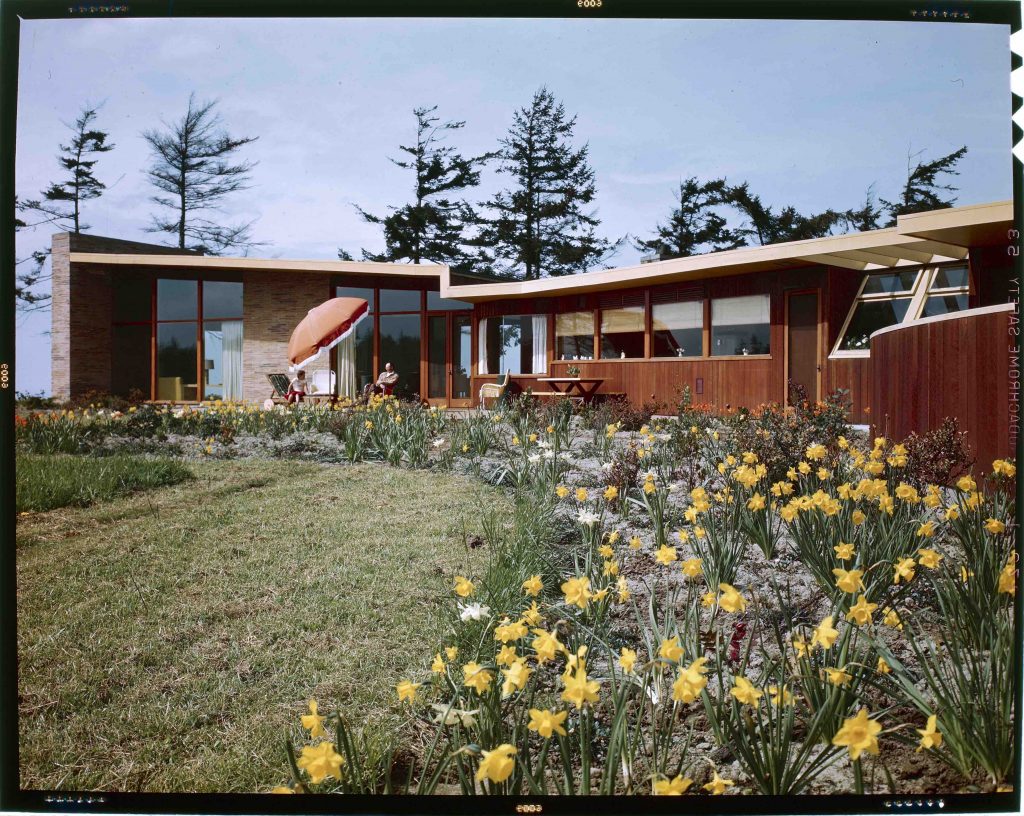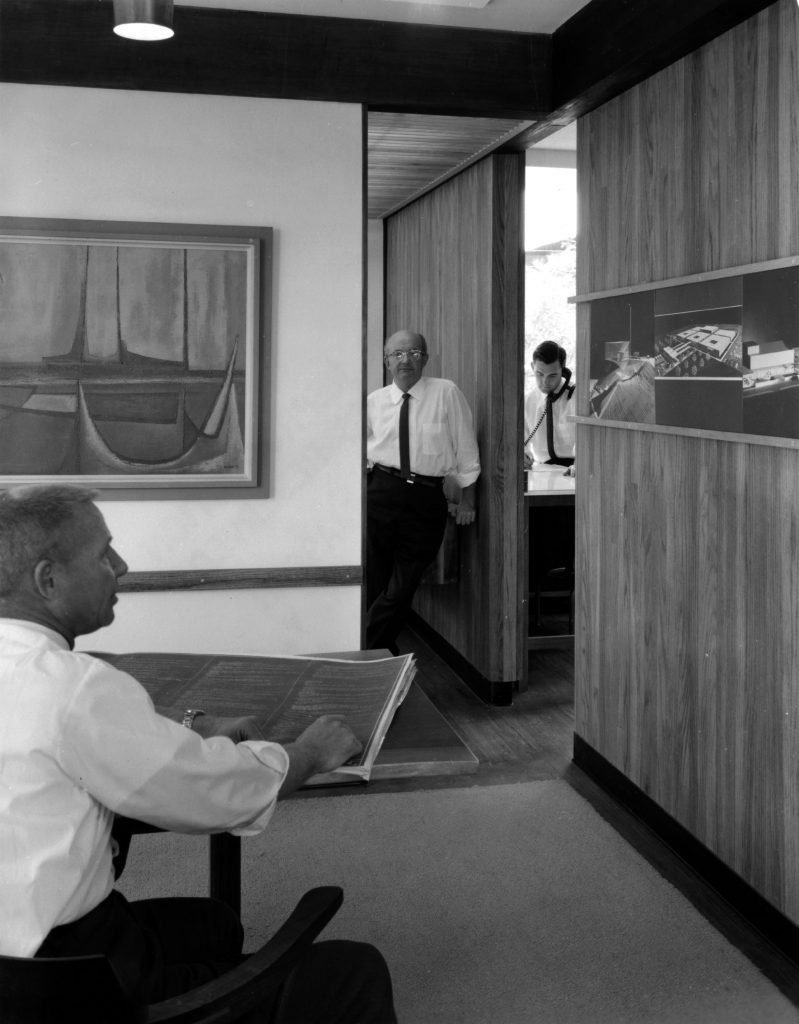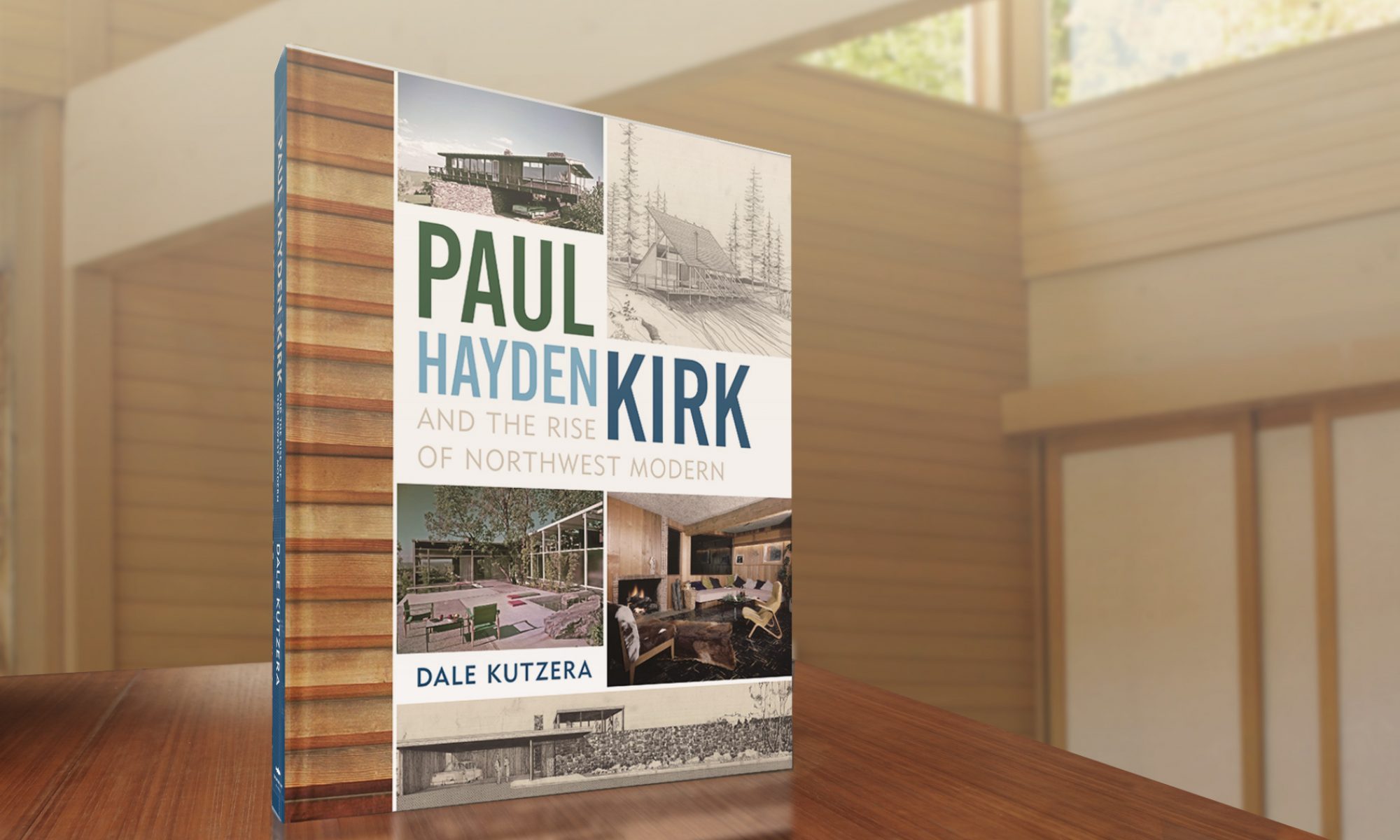PAUL HAYDEN KIRK, 1914 – 1995
Paul Kirk grew up in the Puget Sound region and the local landscape, climate, and lifestyle influenced his work and life. His father ran an interior design store, providing curtains, drapes, and design services to the growing city of Seattle. At the age of three, Kirk contracted polio that paralyzed his right arm and affected his legs. Kirk drew with his left hand, using a system of weights to hold down the large sheets of paper used for architectural renderings.
Despite his handicap, Kirk was an outstanding student at the University of Washington. He was voted the leader of his architecture class, admitted to the Tau Sigma Delta society of architecture students, and obtained drafting positions at various Seattle firms. Kirk set up his own practice as soon as he earned his architecture license.

Kirk’s earliest residential projects reflected his Beaux Arts education, but the small house he designed for himself in 1941 indicated his taste for the modern. During WWII there was little opportunity for building, but following the war, Kirk teamed up with James Chiarelli to design a series of modern residences.

By 1950, the post-war economy sparked the biggest housing boom in American history. Paul Kirk was in the right place at the right time. Over the next decade, he would design hundreds of houses and medical clinics, earning accolades and awards. Through the 1960s and 70s, with design partner David McKinley, Kirk expanded his practice to larger and more complex projects including major buildings for the Seattle World’s Fair and the University of Washington.

